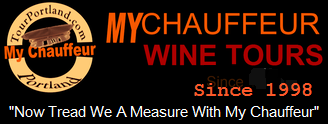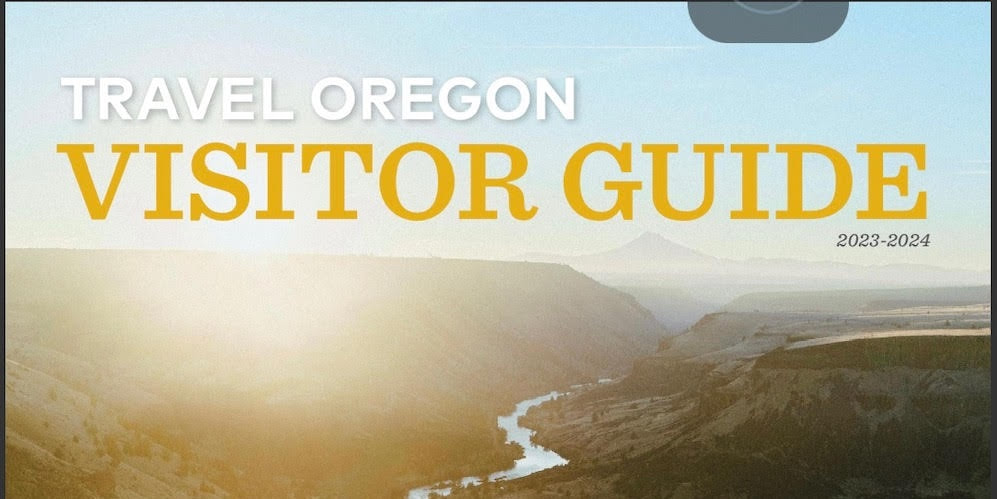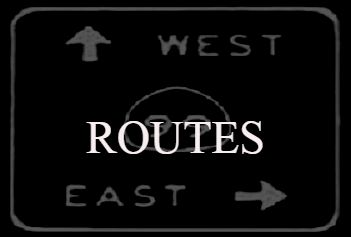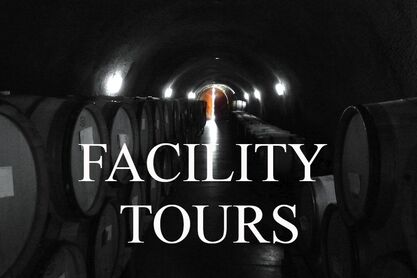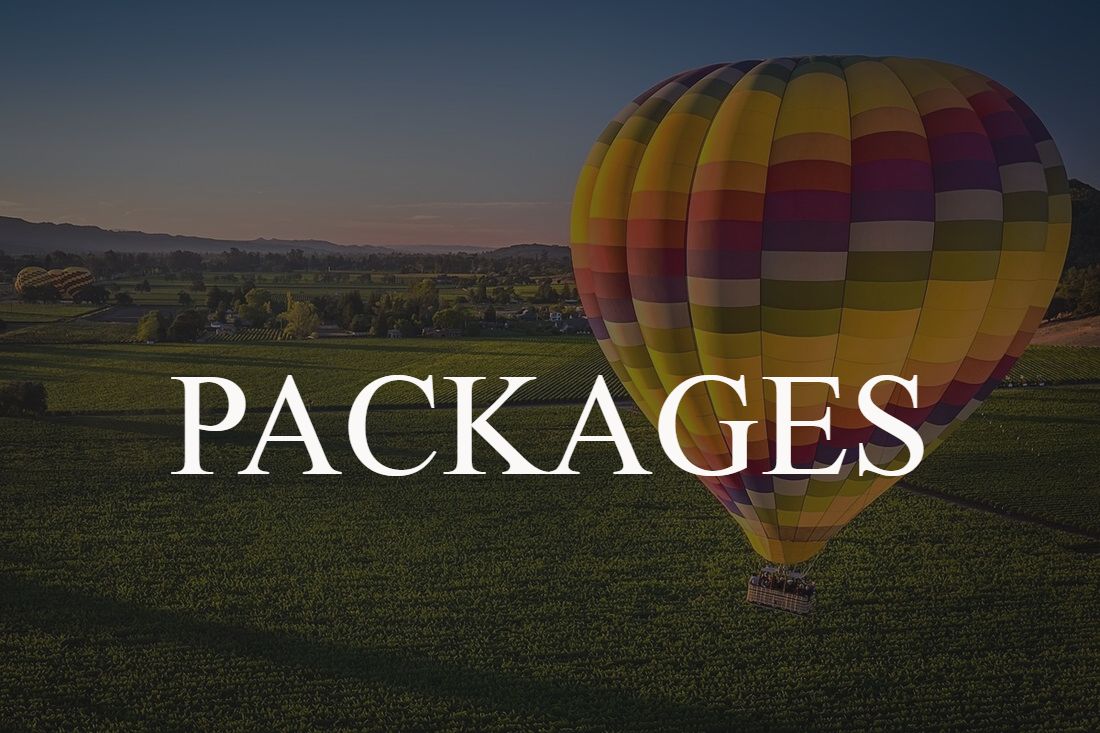... These days, it is wine helping to attract attention to the our region. And during the next three years, Americans will be retracing Lewis and Clark’s famous footsteps in the Northwest. Along the way, tourists will discover wines that Jefferson would have loved.
“I have heard that 20 million people will follow some part of the trail over the course of four years,” said Vicki Leuthold of Maryhill Winery, which overlooks the Columbia River near Goldendale, Wash. “We could see an extra 1,000 people a weekend along this stretch.”
No Northwest winery is more closely tied to Lewis and Clark than Jack Bagdade’s Domaine Meriwether, a 5-year-old Oregon winery devoted to sparkling wines.
“I wanted to identify the product with the region, and no one had picked up on Lewis and Clark in Oregon at all,” said Bagdade, who co-founded Seattle’s Pike & Western Wine Merchants in 1975. “With the bicentennial celebration starting, this should be good timing with the release of the wine. And we make the packaging reflect the different aspects of the expedition. We had great fun doing our homework.”
These days, the 66-year-old retired academic physician rushes around marketing three styles of Methode Champenoise made by Jean-Louis Denois, the first winemaker from Champagne to make sparkling wine in Oregon. There is Discovery Cuvée for $16 (a Pinot Noir/Chardonnay blend), a Captain William Clark Cuvée for $25 (Pinot Noir, Chardonnay and Pinot Meunier), and a Thomas Jefferson Prestige Cuvée for $35, a blend that has been produced only twice in the winery’s five years. The latest Jefferson, from the 2000 vintage, will be released this summer with only 400 cases.
The foil on top of the Clark Cuvee proclaims “O! The Joy,” Clark’s famous entry upon first seeing the Pacific Ocean. On the front of the bottle is the Fevret de Saint Memin painting of Clark. On back of the bottle is a likeness of the Corps’ Jefferson Peace Medal. The Discovery shows a statue of Sacagawea holding her baby, John Baptiste Charbonneau. The sculpture by Alice Cooper, on display in Portland’s Washington Park, was commissioned for the Centennial Lewis & Clark Celebration in 1905. It was the first publicly displayed statute of a female funded by the U.S. government.
Bagdade attended the Lewis and Clark Inaugural at Monticello in January, and The White House served the Discovery Cuvée on Feb. 23 for governors. “It was a pretty exciting time,” Bagdade said. “The folks at Monticello bought and poured our Discovery and the Cpt. William Clark Cuvée. They loved the historical concept of the package as well as the quality of the wine.”
Interest in the Corps of Discovery comes at a good time for Bagdade. “The last two years in the sparkling wine business has just been really, really tough,” he said.
However, there are several Northwest wineries with ties to Lewis and Clark -- many by geography -- so most of the focus for tourists retracing parts of the explorers’ trail in the next few years will be along the Snake and Columbia Rivers.
Perhaps the most famous landmark in the Northwest wine industry with strongest ties to the Corps of Discovery is Canoe Ridge.
The area reminded Lewis and Clark of an upside-down canoe as they drifted down the Columbia on Oct. 19, 1805, a few miles downstream from the present-day town of Paterson, Wash. -- home to Stimson Lane’s Columbia Crest.
According to The Wine Project, Washington State’s Winemaking History, the late Dr. Walter Clore told author Ron Irvine that he found the name Canoe Ridge listed on government maps dating back to 1908. So Lewis and Clark’s nickname became official.
Canoe Ridge gently rises 900 feet along the northern bank of the Columbia, with the town of Boardman, Ore., across the river. Historically, Canoe Ridge remains 10 degrees warmer during the winter than most nearby vineyards because of the Columbia River. During the summer, cool nights and the Gorge winds help the fruit attain its wonderful acidity as the clusters ripen. So it’s no wonder that Canoe Ridge inspired the naming of two vineyards and winery.
Canoe Ridge Vineyard in Walla Walla, well known for its Merlot and Chardonnay, took the name because that’s where the estate vineyard is for the winery, owned by Chalone Wine Group. The Napa, Calif., group first planted Canoe Ridge in 1989.
“We’re going to have stickers put on bottles to commemorate Lewis and Clark,” said Ken Morris, director of communications for the Chalone Wine Group. “We don’t know what it is going to look like, but we thought the sticker would be easier for the consumer and easier for us rather than producing a different label.”
Soon after Chalone staked its claim to Canoe Ridge, Stimson Lane bought adjoining land and created some confusion by calling its new vineyard Canoe Ridge Estate.
Ironically, it was a chance tasting of Rick Small’s Woodward Canyon Chardonnay in a Seattle restaurant by Chalone CEO Phil Woodward -- no relation — that prompted Chalone to purchase much of Canoe Ridge. Small still obtains grapes from Canoe Ridge.
Some of Small’s many acclaimed bottlings tap into the Charbonneau Vineyard, allowing Small to produce a Meritage called Charbonneau Red and a white blend of Semillon and Sauvignon Blanc called Charbonneau Blanc -- both under the Walla Walla County appellation. The vineyard, owned by Mickey Witherspoon, sits in northwest Walla Walla County overlooking Charbonneau Park and the Snake River. The Corps of Discovery floated past this stretch Oct. 15-16, 1805, and the park is named after Toussaint Charbonneau. He was the French-Canadian interpreter married to Sacagawea. He was about 47 years old, making him the oldest person on the adventure. Small, a third-generation farmer on the Woodward Canyon estate, said his winery’s connection with the Lewis and Clark trail is “mostly coincidental.”
“But I am a history person,” he added. “We already do the (Old Vines) Dedication Series (of historic Walla Walla figures), and I do it because I think it is interesting. It gives people more of a sense of history and our place in it. I think it enriches the history of the wines, knowing where the wine comes from.”
Across the Snake River from Charbonneau Vineyard is the vineyards for Gordon Brothers Cellars.
On Oct. 16, 1805, the Corps first sighted “the great Columbia River.” They stopped to camp and rest at what is now Sacajawea State Park, two miles east of Pasco. On Oct. 17, Clark took two men to explore up the Columbia River and got as far upstream as Bateman Island, where the Yakima River -- which the Indians called “Tap teel” -- empties into the Columbia. The confluence is within view of Richland wineries Bookwalter and Barnard Griffin, less than three miles away from Bateman Island. A few days after the Corps of Discovery left the Snake River and drifted past Canoe Ridge, the Columbia River grew treacherous. From Oct. 25-28 1805, the explorers stayed at what they called Fort Rock Camp, which would become The Dalles, Ore., after rafting through what modern canoeists would categorize as Class V rapids, according to Ambrose. At certain points, the Columbia River channel was only 50 yards wide.
Robert Thomas painted a mural in 1993 that features Lewis and Clark surveying the Columbia River near The Dalles. The mural can be found on the corner of Second and Federal in downtown The Dalles and also on Maryhill Winery’s Fort Rock Red 2001 table wine (rated Outstanding in this issue).
“I’ve sold a bunch of the Fort Rock Red just because of the label,” said Maryhill co-owner Vicki Leuthold. “Some weren’t even red wine drinkers but thought it would be a fun gift. Label designs can get a little involved, expensive and labor intensive, but it’s well worth it.”
Maryhill Winery, which is near the Maryhill Museum and overlooks the Gorge, plans to continue with the Fort Rock label through 2006.
Wineries along this part of the trail are the most active in commemorating the Corps of Discovery. Marshal’s Winery in Dallesport, Wash., and the Goodwillies at Wind River Cellars in Husum, Wash., are among those gearing up for the bicentennial.
“We hear all about it, and I was thinking, ‘I’d better do something.’ They are talking about such huge numbers of people coming through the area,” said Kris Goodwillie, who also serves on the Klickitat Tourism Advisory Board.
So Wind River Cellars is working with Craig Spaeta, a White Salmon artist, for the label on their Chardonnay. They produced 600 cases of the 2002 vintage, more than double their usual Chardonnay bottling, and a portion of the proceeds will benefit the Lewis and Clark Education Center at Maryhill.
Wind River’s Port of Celilo -- an award-winning Lemberger port-style wine -- has helped raise the awareness of Celilo Vineyard, which is named for Celilo Falls, the rapids just above those that Lewis and Clark encountered near The Dalles. The landmark, near where Oregon’s Deschutes River empties into the Columbia, became inundated by the construction of The Dalles Dam in 1958.
The Goodwillies hope to get enough Gorge wineries to produce special Lewis & Clark labels and create a collectors box set of wines.
Just downstream from the Columbia River Gorge is English Estate, a quaint 2-year-old winery founded at a 100-year farm in Clark County near Vancouver, Wash., that is in the planning stages for a special bottling. The Pinot Noir producer will be engraving a Lewis and Clark commemorative picture on magnums of its 2001 Reserve Pinot Noir. The Corps passed through here Nov. 4, 1805, and first tasted wapato, an underwater plant with edible roots.
Farther down river, and the only winery at the end of the trail, is Shallon Winery in Astoria. Paul van der Veldt began producing wild fruit, berry and whey wines 22 years ago. The name of his winery comes from Gaultheria shallon, the Latin name for the native plant salal described by Lewis as the Corps wintered in nearby Fort Clatsop.
In 2005, Astoria residents will be celebrating the 50th anniversary of their handiwork -- the handmade replica of Fort Clatsop. They donated the log fort to the National Park Service in 1958.
On the homeward-bound voyage, the Corps was directed by the Wallula tribe to an overland trail back to the Clearwater River that would bypass the lower part of the Snake. So beginning April 30, 1806, they followed the Touchet River to Patit Creek and Dayton, through Pomeroy to what is now Chief Timothy State Park near Clarkston. This stretch is referred to by some as “The Forgotten Trail,” but the overland route’s place in history is not lost upon Patit Creek Cellars, a new boutique winery in Dayton.
“From the winery, we can walk to where they had lunch,” said co-owner Marcene Hendrickson. She and her husband, Paul, are the winery’s resident partners, along with two other couples in Vancouver, Wash.
Patit Creek Cellars’ label features a painting by Walla Walla artist L.W. Cain, who captured a creek-side scene two miles east of Dayton that is believed to be where the Corps of Discovery spent the evening of May 2, 1806.
On May 4, 1806, they made their way back to the area of Clarkston, Wash.-Lewiston, Idaho. Camas Winery of Moscow, in the midst of changing its name to Camas Prairie Winery because of legal pressure from California, is Idaho’s third-oldest winery and the winery nearest to the Lewis & Clark Trail in Idaho.
Camas produces both still and sparkling wines from Columbia Valley grapes while specializing in mead. The huckleberry mead routinely brings home medals from the L.A. County Fair, so the winery uses a special label on that wine to pay tribute to the Corps of Discovery. The winery commissioned the original artwork, painted by Moscow artist Melissa Rockwood.
“We created it last year, and I’m using it now,” said owner Stu Scott. “We’ll use the label from 2003 to 2005. It’s the same wine and will be sold at no extra charge. It’s something that promotes Idaho and we hope has a nice connection with tourism.”
article from www.winepressnw.com
“I have heard that 20 million people will follow some part of the trail over the course of four years,” said Vicki Leuthold of Maryhill Winery, which overlooks the Columbia River near Goldendale, Wash. “We could see an extra 1,000 people a weekend along this stretch.”
No Northwest winery is more closely tied to Lewis and Clark than Jack Bagdade’s Domaine Meriwether, a 5-year-old Oregon winery devoted to sparkling wines.
“I wanted to identify the product with the region, and no one had picked up on Lewis and Clark in Oregon at all,” said Bagdade, who co-founded Seattle’s Pike & Western Wine Merchants in 1975. “With the bicentennial celebration starting, this should be good timing with the release of the wine. And we make the packaging reflect the different aspects of the expedition. We had great fun doing our homework.”
These days, the 66-year-old retired academic physician rushes around marketing three styles of Methode Champenoise made by Jean-Louis Denois, the first winemaker from Champagne to make sparkling wine in Oregon. There is Discovery Cuvée for $16 (a Pinot Noir/Chardonnay blend), a Captain William Clark Cuvée for $25 (Pinot Noir, Chardonnay and Pinot Meunier), and a Thomas Jefferson Prestige Cuvée for $35, a blend that has been produced only twice in the winery’s five years. The latest Jefferson, from the 2000 vintage, will be released this summer with only 400 cases.
The foil on top of the Clark Cuvee proclaims “O! The Joy,” Clark’s famous entry upon first seeing the Pacific Ocean. On the front of the bottle is the Fevret de Saint Memin painting of Clark. On back of the bottle is a likeness of the Corps’ Jefferson Peace Medal. The Discovery shows a statue of Sacagawea holding her baby, John Baptiste Charbonneau. The sculpture by Alice Cooper, on display in Portland’s Washington Park, was commissioned for the Centennial Lewis & Clark Celebration in 1905. It was the first publicly displayed statute of a female funded by the U.S. government.
Bagdade attended the Lewis and Clark Inaugural at Monticello in January, and The White House served the Discovery Cuvée on Feb. 23 for governors. “It was a pretty exciting time,” Bagdade said. “The folks at Monticello bought and poured our Discovery and the Cpt. William Clark Cuvée. They loved the historical concept of the package as well as the quality of the wine.”
Interest in the Corps of Discovery comes at a good time for Bagdade. “The last two years in the sparkling wine business has just been really, really tough,” he said.
However, there are several Northwest wineries with ties to Lewis and Clark -- many by geography -- so most of the focus for tourists retracing parts of the explorers’ trail in the next few years will be along the Snake and Columbia Rivers.
Perhaps the most famous landmark in the Northwest wine industry with strongest ties to the Corps of Discovery is Canoe Ridge.
The area reminded Lewis and Clark of an upside-down canoe as they drifted down the Columbia on Oct. 19, 1805, a few miles downstream from the present-day town of Paterson, Wash. -- home to Stimson Lane’s Columbia Crest.
According to The Wine Project, Washington State’s Winemaking History, the late Dr. Walter Clore told author Ron Irvine that he found the name Canoe Ridge listed on government maps dating back to 1908. So Lewis and Clark’s nickname became official.
Canoe Ridge gently rises 900 feet along the northern bank of the Columbia, with the town of Boardman, Ore., across the river. Historically, Canoe Ridge remains 10 degrees warmer during the winter than most nearby vineyards because of the Columbia River. During the summer, cool nights and the Gorge winds help the fruit attain its wonderful acidity as the clusters ripen. So it’s no wonder that Canoe Ridge inspired the naming of two vineyards and winery.
Canoe Ridge Vineyard in Walla Walla, well known for its Merlot and Chardonnay, took the name because that’s where the estate vineyard is for the winery, owned by Chalone Wine Group. The Napa, Calif., group first planted Canoe Ridge in 1989.
“We’re going to have stickers put on bottles to commemorate Lewis and Clark,” said Ken Morris, director of communications for the Chalone Wine Group. “We don’t know what it is going to look like, but we thought the sticker would be easier for the consumer and easier for us rather than producing a different label.”
Soon after Chalone staked its claim to Canoe Ridge, Stimson Lane bought adjoining land and created some confusion by calling its new vineyard Canoe Ridge Estate.
Ironically, it was a chance tasting of Rick Small’s Woodward Canyon Chardonnay in a Seattle restaurant by Chalone CEO Phil Woodward -- no relation — that prompted Chalone to purchase much of Canoe Ridge. Small still obtains grapes from Canoe Ridge.
Some of Small’s many acclaimed bottlings tap into the Charbonneau Vineyard, allowing Small to produce a Meritage called Charbonneau Red and a white blend of Semillon and Sauvignon Blanc called Charbonneau Blanc -- both under the Walla Walla County appellation. The vineyard, owned by Mickey Witherspoon, sits in northwest Walla Walla County overlooking Charbonneau Park and the Snake River. The Corps of Discovery floated past this stretch Oct. 15-16, 1805, and the park is named after Toussaint Charbonneau. He was the French-Canadian interpreter married to Sacagawea. He was about 47 years old, making him the oldest person on the adventure. Small, a third-generation farmer on the Woodward Canyon estate, said his winery’s connection with the Lewis and Clark trail is “mostly coincidental.”
“But I am a history person,” he added. “We already do the (Old Vines) Dedication Series (of historic Walla Walla figures), and I do it because I think it is interesting. It gives people more of a sense of history and our place in it. I think it enriches the history of the wines, knowing where the wine comes from.”
Across the Snake River from Charbonneau Vineyard is the vineyards for Gordon Brothers Cellars.
On Oct. 16, 1805, the Corps first sighted “the great Columbia River.” They stopped to camp and rest at what is now Sacajawea State Park, two miles east of Pasco. On Oct. 17, Clark took two men to explore up the Columbia River and got as far upstream as Bateman Island, where the Yakima River -- which the Indians called “Tap teel” -- empties into the Columbia. The confluence is within view of Richland wineries Bookwalter and Barnard Griffin, less than three miles away from Bateman Island. A few days after the Corps of Discovery left the Snake River and drifted past Canoe Ridge, the Columbia River grew treacherous. From Oct. 25-28 1805, the explorers stayed at what they called Fort Rock Camp, which would become The Dalles, Ore., after rafting through what modern canoeists would categorize as Class V rapids, according to Ambrose. At certain points, the Columbia River channel was only 50 yards wide.
Robert Thomas painted a mural in 1993 that features Lewis and Clark surveying the Columbia River near The Dalles. The mural can be found on the corner of Second and Federal in downtown The Dalles and also on Maryhill Winery’s Fort Rock Red 2001 table wine (rated Outstanding in this issue).
“I’ve sold a bunch of the Fort Rock Red just because of the label,” said Maryhill co-owner Vicki Leuthold. “Some weren’t even red wine drinkers but thought it would be a fun gift. Label designs can get a little involved, expensive and labor intensive, but it’s well worth it.”
Maryhill Winery, which is near the Maryhill Museum and overlooks the Gorge, plans to continue with the Fort Rock label through 2006.
Wineries along this part of the trail are the most active in commemorating the Corps of Discovery. Marshal’s Winery in Dallesport, Wash., and the Goodwillies at Wind River Cellars in Husum, Wash., are among those gearing up for the bicentennial.
“We hear all about it, and I was thinking, ‘I’d better do something.’ They are talking about such huge numbers of people coming through the area,” said Kris Goodwillie, who also serves on the Klickitat Tourism Advisory Board.
So Wind River Cellars is working with Craig Spaeta, a White Salmon artist, for the label on their Chardonnay. They produced 600 cases of the 2002 vintage, more than double their usual Chardonnay bottling, and a portion of the proceeds will benefit the Lewis and Clark Education Center at Maryhill.
Wind River’s Port of Celilo -- an award-winning Lemberger port-style wine -- has helped raise the awareness of Celilo Vineyard, which is named for Celilo Falls, the rapids just above those that Lewis and Clark encountered near The Dalles. The landmark, near where Oregon’s Deschutes River empties into the Columbia, became inundated by the construction of The Dalles Dam in 1958.
The Goodwillies hope to get enough Gorge wineries to produce special Lewis & Clark labels and create a collectors box set of wines.
Just downstream from the Columbia River Gorge is English Estate, a quaint 2-year-old winery founded at a 100-year farm in Clark County near Vancouver, Wash., that is in the planning stages for a special bottling. The Pinot Noir producer will be engraving a Lewis and Clark commemorative picture on magnums of its 2001 Reserve Pinot Noir. The Corps passed through here Nov. 4, 1805, and first tasted wapato, an underwater plant with edible roots.
Farther down river, and the only winery at the end of the trail, is Shallon Winery in Astoria. Paul van der Veldt began producing wild fruit, berry and whey wines 22 years ago. The name of his winery comes from Gaultheria shallon, the Latin name for the native plant salal described by Lewis as the Corps wintered in nearby Fort Clatsop.
In 2005, Astoria residents will be celebrating the 50th anniversary of their handiwork -- the handmade replica of Fort Clatsop. They donated the log fort to the National Park Service in 1958.
On the homeward-bound voyage, the Corps was directed by the Wallula tribe to an overland trail back to the Clearwater River that would bypass the lower part of the Snake. So beginning April 30, 1806, they followed the Touchet River to Patit Creek and Dayton, through Pomeroy to what is now Chief Timothy State Park near Clarkston. This stretch is referred to by some as “The Forgotten Trail,” but the overland route’s place in history is not lost upon Patit Creek Cellars, a new boutique winery in Dayton.
“From the winery, we can walk to where they had lunch,” said co-owner Marcene Hendrickson. She and her husband, Paul, are the winery’s resident partners, along with two other couples in Vancouver, Wash.
Patit Creek Cellars’ label features a painting by Walla Walla artist L.W. Cain, who captured a creek-side scene two miles east of Dayton that is believed to be where the Corps of Discovery spent the evening of May 2, 1806.
On May 4, 1806, they made their way back to the area of Clarkston, Wash.-Lewiston, Idaho. Camas Winery of Moscow, in the midst of changing its name to Camas Prairie Winery because of legal pressure from California, is Idaho’s third-oldest winery and the winery nearest to the Lewis & Clark Trail in Idaho.
Camas produces both still and sparkling wines from Columbia Valley grapes while specializing in mead. The huckleberry mead routinely brings home medals from the L.A. County Fair, so the winery uses a special label on that wine to pay tribute to the Corps of Discovery. The winery commissioned the original artwork, painted by Moscow artist Melissa Rockwood.
“We created it last year, and I’m using it now,” said owner Stu Scott. “We’ll use the label from 2003 to 2005. It’s the same wine and will be sold at no extra charge. It’s something that promotes Idaho and we hope has a nice connection with tourism.”
article from www.winepressnw.com
